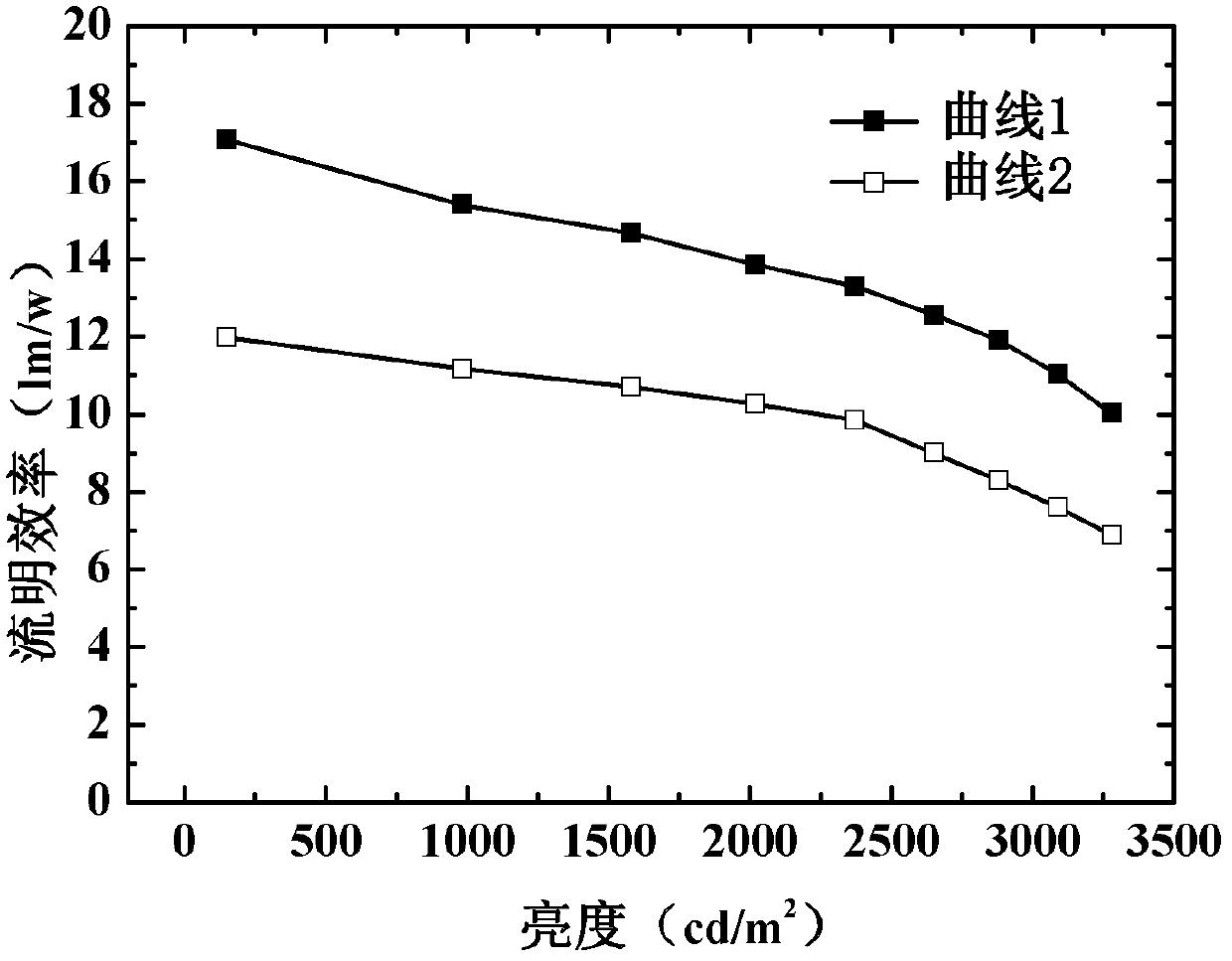Reverse top emission organic light-emitting device and preparing method thereof
A luminescence and top-emission technology, applied in the direction of electric solid-state devices, semiconductor/solid-state device manufacturing, electrical components, etc., can solve the problems of low luminous efficiency of devices, light loss, affecting luminous efficiency, etc., to improve electron transmission rate, light The effect of reducing the loss and improving the light extraction efficiency
- Summary
- Abstract
- Description
- Claims
- Application Information
AI Technical Summary
Problems solved by technology
Method used
Image
Examples
preparation example Construction
[0035] The method for preparing the above-mentioned stacked inverted top-emitting organic electroluminescent device includes the following steps:
[0036] S1. Clean the glass substrate sequentially with detergent, deionized water, acetone, ethanol, and isopropanol for 15 minutes to remove organic pollutants on the glass surface
[0037] S2. Using an evaporation process, prepare a cathode layer on the surface of the cleaned glass substrate:
[0038] S3, then using an electron beam or an evaporation process to prepare a doped scattering layer on the surface of the cathode layer; the doped scattering layer is TiO 2 Doping with carbonate particles, the doping mass percentage of the carbonate particles is 5-30%; the thickness of the doped scattering layer is 50-300nm;
[0039] S4, using an evaporation process, sequentially stacking an evaporation hole blocking layer, a light emitting layer, a hole transport layer, a hole injection layer and an anode layer on the surface of the doped...
Embodiment 1
[0045] The structure of the inverted top-emitting organic electroluminescent device in this embodiment: glass / Ag / TiO 2 :CaCO 3 / TPBi / TAZ:Ir(ppy) 3 / NPB / MoO 3 / Ag.
[0046] The fabrication process of the inverted top-emitting organic electroluminescent device is as follows:
[0047] First, ultrasonically clean the glass substrate with detergent, deionized water, acetone, ethanol, and isopropanol for 15 minutes each to remove organic pollutants on the glass surface;
[0048] Next, using an evaporation process, prepare a cathode layer on the surface of the cleaned glass substrate, the material is Ag, and the thickness is 100nm;
[0049] Subsequently, a doped scattering layer with a thickness of 200 nm was prepared on the surface of the cleaned glass substrate: CaCO with a particle size of 200 nm 3 and TiO with a particle size of 20 nm 2 For doping, CaCO 3 The doping mass percentage is 20%;
[0050] Secondly, using the electron beam process, prepare a hole blocking layer (...
Embodiment 2
[0053] The structure of the inverted top-emitting organic electroluminescent device in this embodiment: glass / Au / TiO 2 :MgCO 3 / TAZ / TAZ:Ir(MDQ) 2 (acac) / TAPC / V 2 o 5 / Au.
[0054] The fabrication process of the inverted top-emitting organic electroluminescent device is as follows:
[0055] First, ultrasonically clean the glass substrate with detergent, deionized water, acetone, ethanol, and isopropanol for 15 minutes each to remove organic pollutants on the glass surface;
[0056] Next, using an evaporation process, prepare a cathode layer on the surface of the cleaned glass substrate, the material is Au, and the thickness is 80nm;
[0057] Subsequently, a doped scattering layer with a thickness of 50 nm was prepared on the surface of the cleaned glass substrate by evaporation process: MgCO with a particle size of 100 nm 3 and TiO with a particle size of 20 nm 2 For doping, MgCO 3 The doping mass percentage is 5%;
[0058] Secondly, using an electron beam process, a h...
PUM
| Property | Measurement | Unit |
|---|---|---|
| Thickness | aaaaa | aaaaa |
| Thickness | aaaaa | aaaaa |
| Thickness | aaaaa | aaaaa |
Abstract
Description
Claims
Application Information
 Login to View More
Login to View More - R&D
- Intellectual Property
- Life Sciences
- Materials
- Tech Scout
- Unparalleled Data Quality
- Higher Quality Content
- 60% Fewer Hallucinations
Browse by: Latest US Patents, China's latest patents, Technical Efficacy Thesaurus, Application Domain, Technology Topic, Popular Technical Reports.
© 2025 PatSnap. All rights reserved.Legal|Privacy policy|Modern Slavery Act Transparency Statement|Sitemap|About US| Contact US: help@patsnap.com


